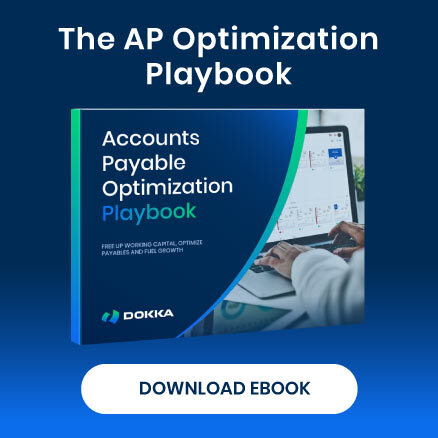Manual data entry is a silent productivity killer in accounting. It consumes valuable time, increases the risk of errors, and keeps skilled finance professionals stuck in repetitive, mundane tasks, sometimes even causing finger strain.
And it’s not just accounting—manual data entry is a widespread issue across many industries.
But with technological advancements, the future of finance may eliminate manual data entry altogether. Automation is revolutionizing the way finance teams operate, enabling them to focus on strategy rather than data entry.
For accounts payable (AP) teams, eliminating manual data entry isn’t just about efficiency—it’s about accuracy, compliance, and unlocking valuable human capital. The right AI-powered solutions can transform operations, allowing teams to shift their focus from chasing numbers in spreadsheets to analysis, forecasting, and strategic insights.
So, how can finance teams break free from the shackles of manual data entry for good? Here are some powerful ways to make it happen.
9 Ways to End Manual Data Entry Forever
- Automated Invoice Processing
- Optical Character Recognition (OCR)
- Automated Data Matching and Reconciliation
- API Integrations with ERP and Accounting Systems
- Automated Approval Workflows
- AI-Driven Expense Management
- Predictive Analytics for Financial Close
- Automated Audit Trails and Compliance Checks
- AI-Powered Bank Reconciliation
When considering the most time-consuming and error-prone tasks in finance, manual invoice processing undoubtedly ranks near the top.
AI-powered invoice automation eliminates the need for manual data entry, extracting key details such as invoice numbers, due dates, and amounts. Advanced solutions integrate with ERP systems, automatically validate information, and flag discrepancies before they lead to payment delays or compliance issues.
Automated invoice processing solutions also detect duplicate invoices, prevent fraudulent submissions, and ensure compliance with contract terms.
Leveraging AI and machine learning allows finance teams to automate invoice processing, cut costs, improve cash flow management, enforce payment policies, strengthen vendor relationships, gain real-time insights into outstanding liabilities, and ensure suppliers are paid on time—all while significantly reducing manual effort.
OCR technology has revolutionized how finance teams manage paper-based and digital invoices, receipts, and financial documents. Modern OCR systems, enhanced with machine learning, recognize and extract text with remarkable accuracy.
Unlike traditional OCR, which often struggles with variations in fonts and layouts, AI-powered OCR continuously learns and improves, reducing the need for manual corrections. As a result, finance teams can digitize documents seamlessly, increasing efficiency and minimizing the risk of lost or misfiled paperwork.
Beyond simple text recognition, advanced OCR solutions integrate with accounting software to categorize expenses, validate payment information, and auto-populate financial records. AI-driven OCR can also recognize handwritten text, multi-language invoices, and structured data fields, making it an invaluable tool for finance teams looking to scale efficiently.
Manually matching invoices with purchase orders and receipts is a labor-intensive process, and very prone to costly errors. On the other hand, AI-driven matching algorithms automatically compare invoice data against POs, flag discrepancies, and highlight mismatches in real time.
Advanced systems handle partial matches and multi-line invoices, reducing the need for human intervention. Automating the process accelerates approvals and ensures businesses pay only for the goods and services received, preventing overpayments and fraud.
Continuous learning capabilities in automated reconciliation tools help identify trends in transaction discrepancies, suggest corrective actions, and alert finance teams to potential compliance risks. Integration with banking systems further streamlines financial close reconciliations, minimizing end-of-month workloads and improving financial reporting accuracy.
Data silos create inefficiencies and increase the risk of errors in financial management.
Integrating AI-powered automation tools such as DOKKA with ERP and accounting systems via APIs ensures seamless data exchange. Such integrations eliminate duplicate data entry, enhance accuracy, and provide real-time financial insights.
Whether syncing invoices, reconciling transactions, or automating approvals, API-driven solutions help finance teams operate more efficiently while maintaining compliance with internal and regulatory requirements.
In addition, API integrations enable real-time data access across multiple financial systems, supporting consolidated reporting and informed decision-making. A unified data ecosystem fosters cross-departmental collaboration, strengthens financial accuracy, and reduces reliance on manual data exports and imports.
Traditional approval workflows are often bogged down with email chains, misplaced documents, and manual follow-ups.
AI-powered automation streamlines the approval process by routing invoices, payments, and financial documents to the right stakeholders based on predefined rules. Approvers receive notifications and can review and approve transactions instantly from any device.
Automated approval workflows not only reduce delays but also enhance transparency and ensure compliance with company policies. Implementing intelligent approval thresholds and escalation paths ensures that high-value transactions receive the necessary oversight, while routine approvals proceed without delay. Additionally, approval automation provides a full audit trail, capturing every approval and rejection for compliance and audit purposes.
Expense management is another area where manual data entry leads to inefficiencies and compliance risks.
AI-powered expense management tools automatically scan receipts, categorize expenses, and validate transactions against corporate policies. Advanced software integrate with credit card feeds and accounting systems, ensuring that all expenses are captured and reconciled in real time. Eliminating manual reporting and reimbursement delays improves financial visibility and enhances employee satisfaction.
Modern AI-driven expense solutions detect policy violations, flag duplicate expenses, and provide analytics on spending trends. These capabilities help businesses enforce cost control measures and streamline employee expense reimbursement processes.
The financial close process is notorious for its complexity and time-consuming nature. AI-driven predictive analytics can transform it by identifying anomalies, detecting missing entries, and forecasting potential issues before they impact financial statements.
More advanced solutions analyze historical data and provide real-time insights, enabling finance teams to address discrepancies proactively. Automating financial close tasks not only accelerates the process but also enhances accuracy and audit readiness.
Leveraging AI-driven insights allows finance teams to optimize cash reserves, predict upcoming liabilities, and identify trends in operational expenses, strengthening overall financial planning and risk management.
Maintaining a clear and accurate audit trail is essential for compliance and regulatory reporting.
AI-powered automation ensures that every financial transaction, approval, and modification is tracked in real time. These systems provide a comprehensive audit trail that can be accessed instantly, reducing the time and effort required for audits.
Automated compliance checks further enhance risk management by flagging potential regulatory violations before they escalate. Leveraging AI allows businesses to maintain transparency and stay audit-ready without the burden of manual record-keeping.
Automated solutions also proactively identify regulatory changes, suggest necessary policy updates, and ensure adherence to tax laws and industry-specific financial regulations, thereby reducing compliance-related risks.
Manually reconciling bank statements is a labor-intensive task that increases the likelihood of missing discrepancies. AI-driven bank reconciliation tools automatically match transactions, detect discrepancies, and ensure that financial records align with bank data.
Machine learning enhances the accuracy of these solutions over time, reducing the need for manual corrections. Automating bank reconciliation not only saves time but also minimizes the risk of financial discrepancies, ensuring that organizations maintain a clear and accurate picture of their cash flow.
Real-time reconciliation capabilities offer businesses better visibility into available funds, optimize cash flow management, and help prevent fraud by identifying suspicious transactions before they escalate into major financial issues.
The Future: A Fully Automated Finance Function Without Manual Work
The future of finance is moving toward complete automation, eliminating manual data entry and enabling finance teams to focus on strategic tasks rather than routine work.
With AI-powered tools and seamless integration with enterprise resource planning (ERP) systems, financial data will flow effortlessly between platforms, reducing errors and eliminating data silos. Some key benefits include:
- Increased efficiency: Automation handles repetitive tasks, speeding up processes like invoicing, reconciliation, and compliance checks.
- Improved accuracy: Continuous AI learning minimizes human error, providing reliable financial data.
- Better decision-making: Finance teams can focus on analysis, offering insights that contribute to the company’s growth.
- Enhanced compliance and audit readiness: Real-time monitoring and automated record-keeping ensure compliance and streamline audits.
DOKKA is a prime example of how AI-powered tools can support this shift. By automating invoice processing, reconciliation, and data entry, DOKKA helps finance teams eliminate manual tasks, enhance accuracy, and ensure compliance. Its seamless integration with ERP systems ensures that financial data is always up-to-date and accessible, empowering finance professionals to focus on strategy and value-added activities.
The era of manual data entry in finance is quickly fading, and AI solutions like DOKKA are leading the charge toward a fully automated, autonomous accounting future.













